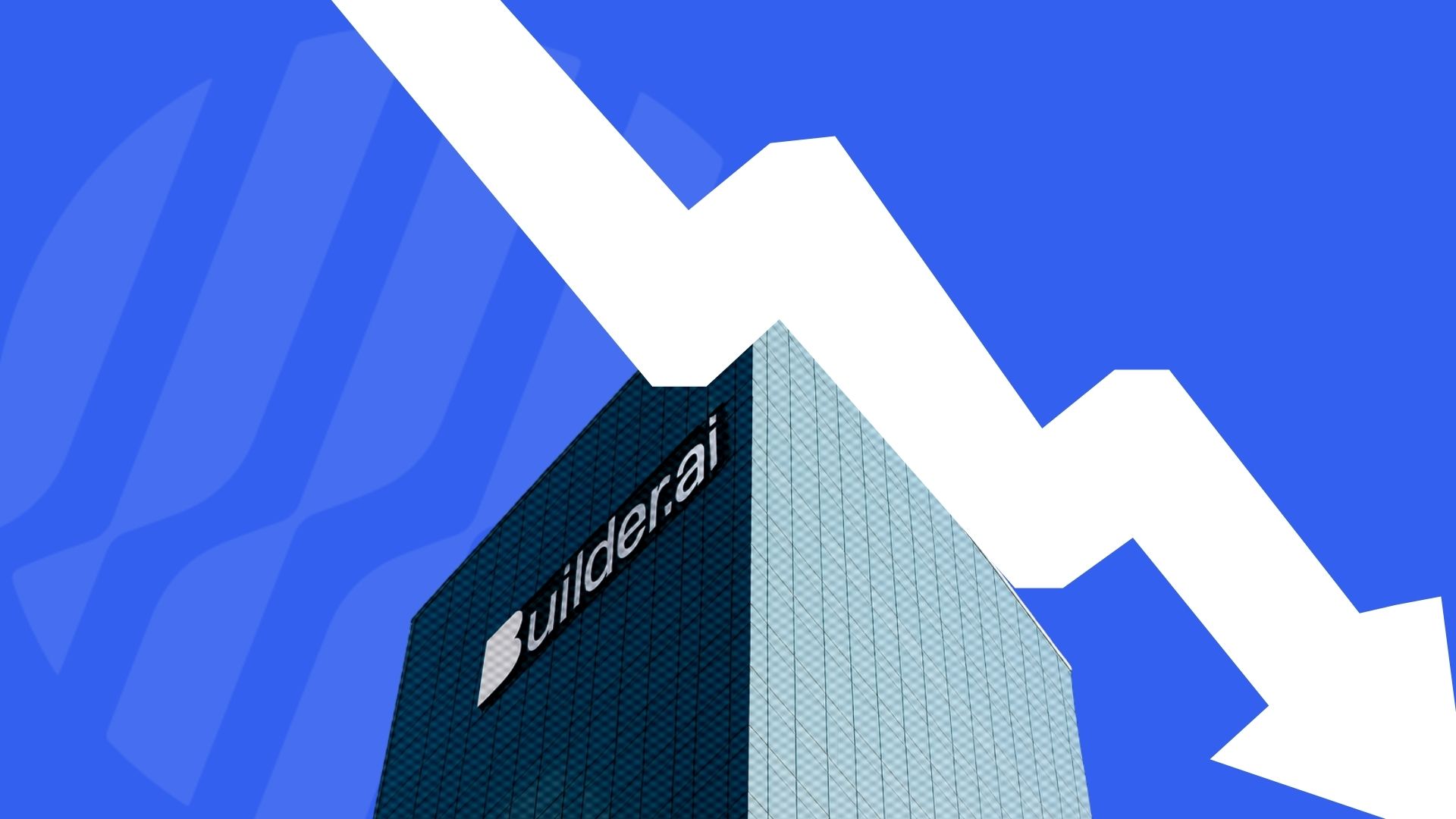In the pantheon of startup failures, some crashes are forgotten within months. Others become cautionary tales that echo through Silicon Valley for decades. Builder.ai's spectacular implosion — from a $1.5 billion valuation to bankruptcy in less than two years — firmly belongs in the latter category.
But this isn't just another story of startup hubris. It's a masterclass in deception, a $450 million fraud that reveals the dangerous underbelly of AI hype, and a warning shot for an entire industry built on promises it can't yet keep.
The Pizza Promise That Fooled Everyone
Sachin Dev Duggal had a compelling origin story. Frustrated while trying to build a photo-sharing app called Shoto, the Imperial College engineering graduate couldn't find reliable developers. His solution? Build a platform to make creating software "as easy as ordering pizza."
It was a brilliant pitch. Who hasn't felt the pain of software development — the endless delays, cost overruns, and technical complexities? Builder.ai promised to solve it all with AI, claiming applications could be built 6x faster and 70% cheaper than traditional methods.
The company even had a mascot: "Natasha," marketed as the world's first AI product manager who would guide users through Builder.ai's "patented software assembly line."
Investors ate it up. Microsoft became a strategic partner. The Qatar Investment Authority led a $250 million Series D round in 2023. At its peak, Builder.ai was valued at $1.5 billion.
There was just one problem: it was all a lie.
"A Guy Instead" of AI
The first crack in Builder.ai's facade appeared in 2019, when The Wall Street Journal discovered the uncomfortable truth behind the AI magic. Instead of sophisticated algorithms and machine learning, Builder.ai employed over 700 human developers in India who manually coded each application.
"Natasha" wasn't an AI product manager — she was glorified chatbot collecting requirements that were then handed off to human developers. Employees were explicitly instructed never to mention their Indian location or use "Indian English phrases" during client calls.
The company operated as a traditional development shop while marketing itself as an AI platform. It was AI washing at its most brazen — and it was just the beginning.
The $220 Million Revenue Mirage
Financial fraud on this scale requires creativity. Builder.ai demonstrated plenty of it.
Internal audits revealed that the company had inflated its 2024 revenue by 300% — claiming $220 million when actual revenue was just $55 million. The 2023 numbers were equally fabricated: $180 million claimed versus $45 million in reality.
How do you inflate revenue by 300%? Builder.ai employed several tactics:
- Round-tripping with VerSe Innovation: Creating fake invoices for services never rendered
- Phantom deals: Contracts that existed on paper but not in practice
- Circular billing: Moving money between related entities to create the appearance of revenue
It's the kind of accounting creativity that would make Enron executives proud — and just as illegal.
The Business Model That Never Added Up
Even without the fraud, Builder.ai's fundamental business model was broken. The company marketed itself as a productized SaaS platform with predictable costs and delivery times. In reality, each project required extensive human intervention, making true scalability impossible.
Customers consistently reported:
- 8-12 month delivery times instead of promised weeks
- Hidden revision costs that ballooned budgets
- Poor code quality requiring additional fixes
- Incomplete applications that failed to meet specifications
The unit economics were catastrophic. Builder.ai was essentially running a consulting business while charging SaaS prices — a recipe for disaster that was masked only by fraudulent revenue reporting.
The Governance Black Hole
Perhaps most shocking was Builder.ai's complete governance failure. The company operated without a CFO from July 2023 through its bankruptcy filing — arguably the most critical period in its history. The board, packed with prestigious names and venture capital luminaries, failed to detect or address obvious red flags.
Even founder Sachin Dev Duggal was under investigation for money laundering related to previous business dealings with Videocon. Yet somehow, major investors continued pumping in hundreds of millions of dollars.
The Death Spiral
The end came swiftly. In May 2025, creditor Viola Credit seized $37 million from Builder.ai's accounts, leaving just $5 million in restricted funds. Unable to meet payroll or operational expenses, the company filed for bankruptcy across five jurisdictions: UK, US, UAE, Singapore, and India.
The damage was extensive:
- $85 million owed to Amazon
- $30 million owed to Microsoft
- Hundreds of employees laid off
- Thousands of customers left with incomplete applications
- $450 million in investor losses
The Canary in the AI Coal Mine
Builder.ai's collapse isn't just a story about one company's fraud — it's a warning about systemic problems in the AI startup ecosystem. Industry data reveals troubling patterns:
- 85% of AI startups fail within three years
- 35% of technology vendors admit to exaggerating AI capabilities in marketing
- 75% revenue overstatement is common among failed AI companies
- 99% of AI startups are predicted to fail by 2026 due to unsustainable models
The pressure to demonstrate AI capabilities has created a culture of "fake it till you make it" that often never progresses beyond the faking stage.
Lessons for the AI Gold Rush
Builder.ai's failure offers critical lessons for everyone in the AI ecosystem:
For Entrepreneurs
Build real AI before claiming AI-powered solutions. The technology should drive the marketing, not the other way around. If your AI is mostly humans behind a chatbot, you don't have an AI company — you have a fraud.
Align your business model with operational reality. You can't price like a software company while operating like a consulting firm. Unit economics matter, especially when investor patience runs thin.
For Investors
Technical due diligence is non-negotiable. Having engineers on your investment team isn't optional in the AI age. If you can't evaluate the technology, you shouldn't be investing in it.
Red flags compound quickly. Missing CFOs, vague technical explanations, and unrealistic growth projections aren't just yellow flags — they're sirens screaming "run."
For Enterprise Customers
Start small and verify claims. Pilot projects are your friend. If a vendor can't demonstrate their AI capabilities in a controlled environment, they probably can't deliver them at scale.
Software escrow isn't just for mission-critical systems anymore. When dealing with AI vendors, protect yourself with contractual safeguards and exit clauses.
The Regulation Reckoning
Builder.ai's collapse will likely accelerate regulatory scrutiny of AI claims. The SEC has already begun investigating "AI washing" among public companies, and the Builder.ai case provides a perfect example of why stronger disclosure requirements are needed.
We should expect:
- Enhanced requirements for AI capability disclosure
- Industry standards for AI assessment and validation
- Whistleblower protections for employees reporting AI fraud
- Criminal penalties for systematic misrepresentation of AI capabilities
Beyond the Hype: Building Sustainable AI
The AI revolution is real, but it requires real technology, real value creation, and real business fundamentals. The companies that will succeed are those that:
- Solve genuine customer problems with AI, not just add AI to existing solutions
- Build sustainable competitive advantages through proprietary technology
- Maintain transparent financials and honest communication about capabilities
- Focus on customer success and retention over rapid acquisition
The $450 Million Warning
Builder.ai's story is ultimately about the dangerous intersection of hype and fraud. In the race to capture AI's enormous potential, too many companies have confused marketing with innovation, promises with products, and growth at any cost with sustainable business building.
The AI industry is at an inflection point. The easy money and uncritical acceptance of AI claims are ending. Going forward, substance will matter more than storytelling, technology more than terminology, and results more than rhetoric.
Builder.ai spent $450 million learning this lesson the hard way. The rest of us got it for free.
The question now is whether we're smart enough to heed the warning.
The AI revolution promises to transform every industry and create trillions in value. But as Builder.ai's collapse demonstrates, the gap between AI promises and AI reality remains vast. Only companies that bridge that gap with genuine innovation, financial integrity, and customer focus will survive the inevitable reckoning ahead.



.png)
.svg)